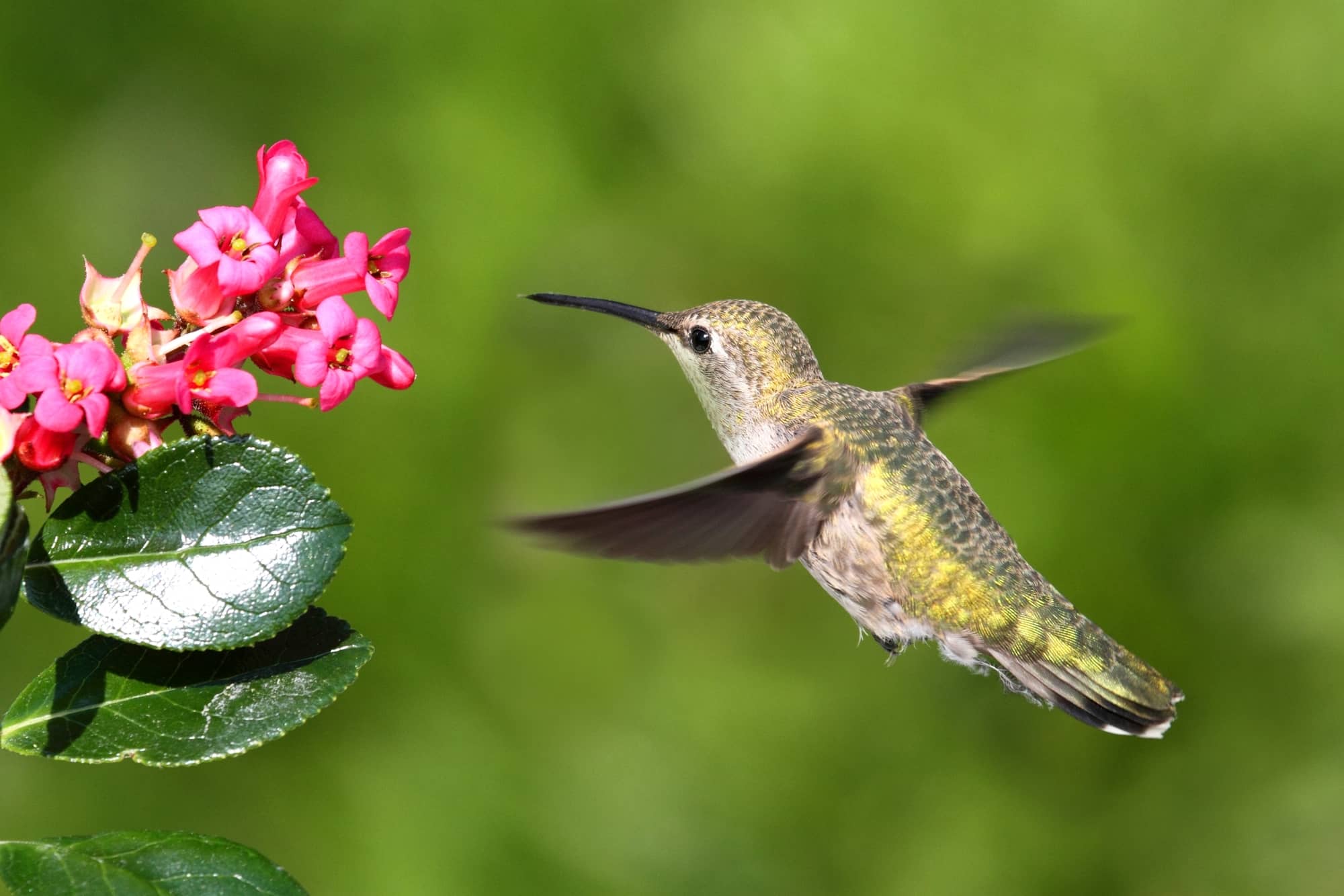Hummingbirds are fascinating creatures. These tiny birds fly at top speed, beating their wings up to 200 times per second. They can even fly backward!
Most hummingbird species live in Central and South America, where the weather is warm all year. But some 15 species of hummingbirds migrate to Northern America, traveling long distances to find food and northern breeding grounds for the summer months.
Why Do Hummingbirds Migrate?
Hummingbirds migrate to find food and a place to breed. Many flowers and insects die off in the winter, making it hard for hummingbirds to find food. And since they don’t store fat like other birds, they need to keep moving to find enough to eat.
At the same time, the days get shorter in winter, meaning there’s less daylight for hummingbirds to gather food. So they migrate to areas where the days are longer, and there’s more food available.
Hummingbird Migration
Hummingbirds use a lot of energy flying, so they have to eat often. To make the long journey north, they need to eat more than their weight in food every day.
Before migrating, hummingbirds fatten up by eating lots of insects and nectar from flowers. They may even double their weight to give them enough energy for the trip.
Adult hummingbirds fly over mountains, forests, and deserts on their journey north. Some species travel more than 3,000 miles following their chosen migratory pattern!
Summer
When they reach their summer breeding ranges in North America, hummingbirds must find a mate and build a nest. They also have to defend their territory from other hummingbirds.
After the eggs hatch, the mother hummingbird feeds her chicks until they’re old enough to fly independently. Once they leave the nest, the juvenile hummingbirds fend for themselves.
Winter
When winter comes, hummingbirds head back south to find warmer weather and more food. The journey is just as arduous as the trip north. But by migrating, these tiny birds can survive the tough times and keep moving forward.
Their migration patterns mean they alternate between the northern and southern hemispheres, chasing summer and the abundance of natural food that comes with it.
When To Put Out & Take Down Your Hummingbird Feeder
You can put your well-maintained hummingbird feeder out as early as February in some parts of the country. But most hummingbirds don’t start migrating north until April or May. To attract migrating hummingbirds, put your feeder out a few weeks before they’re expected in your area.
Male hummingbirds usually arrive before the females so they can establish territories. So if you see a male at your feeder, there’s a good chance more hummingbirds will be coming soon.
As fall approaches, fewer hummingbirds will visit your feeder. By October or November, most hummingbirds have migrated south for the winter.
Keep your feeder out until at least mid-November or even December in some parts of the country. You might be able to attract a late straggler or two.
A Hummingbird Always Remembers

While hummingbirds don’t mate for life, they will often return to the same area to mate and nest. So if you’re lucky enough to have hummingbirds in your garden, there’s a good chance they’ll come back year after year.
You can help them by keeping your feeders clean and full of fresh nectar. You can also plant flowers that attract hummingbirds. Red is a favorite color, but they also like pink, purple, and orange.
You can create a welcoming environment for these amazing birds by providing an abundant food source and shelter. And, with a bit of patience and luck, you might see them return year after year.
Threats During Migration
Migration is a dangerous time for hummingbirds. They can be killed by bad weather, predators, and exhaustion. To make the migratory journey north, hummingbirds must cross the Gulf of Mexico. This is a perilous journey, as they must fly non-stop for more than 500 miles over open water. Many hummingbirds don’t make it and die in mid-flight.
During their migration, hummingbirds must also contend with bad weather. A strong storm can quickly kill a hummingbird, as they are so small and lightweight.
Predators can also kill migrating hummingbirds. Hawks, cats, and snakes all see these tiny birds as an easy meal. So migration is a dangerous time for these small creatures.
But, despite the risks, hummingbirds continue to migrate every year. It’s a fantastic long-distance journey that these tiny birds make, and it’s something we can all admire.
Hummingbird Conservation
Hummingbirds are a vital part of our ecosystem, and they play an important role in pollination. They are also a popular bird to watch, and their numbers are declining in some areas.
There are many things we can do to help conserve these amazing creatures.
- Plant native flowers that attract hummingbirds.
- Put up hummingbird feeders and keep them clean and filled with fresh nectar to increase food availability.
- Create a habitat for hummingbirds. You can do this by leaving some areas of your yard natural or planting trees and shrubs that provide shelter.
We can make a difference for these tiny birds by taking these simple steps. And in doing so, we can help ensure that they will be around for years to come.
Final Thoughts
Hummingbirds are amazing creatures, and their migration is an incredible journey. But it’s a journey that comes with many risks. These tiny bird species must contend with bad weather, predators, and exhaustion.
We can help them by creating a habitat that is safe and welcoming. Remember that hummingbirds are protected by the Migratory Bird Treaty Act. It is illegal to trap, harm, or move these birds.
If you find a hummingbird that appears to be injured or sick, contact a licensed wildlife rehabilitator for assistance.

